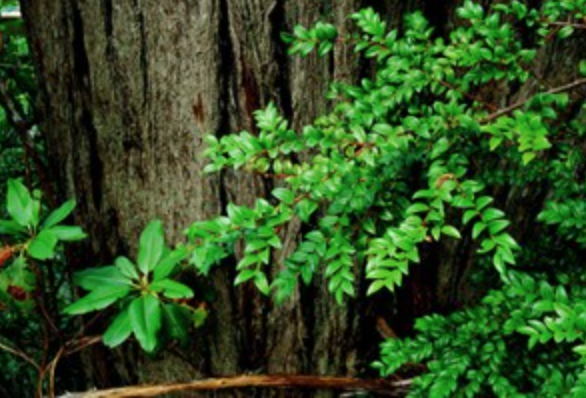Alterra Hetzel, Guest Blogger Forest Carbon Business Development Manager for The Conservation Fund
Every day, The Conservation Fund works to prevent the loss of America’s last large and intact privately-held forest. With a core belief that environmental protection and economic vitality fundamentally reinforce one another, we strive to ensure the forests’ vital role in providing clean air, water and wildlife habitat, while guaranteeing they also benefit people in communities across America.

Photo courtesy of The Conservation Fund
For each working forest property we protect, we develop and implement sustainable management plans, placing conservation safeguards on the most sensitive lands so the forests will always remain forests. We then return them to private ownership or public agency stewardship. In this way, each forest is protected, but remains working, boosting the local economy by maintaining jobs for decades to come.
Third-party forest certification is an essential criterion to ensure that long-term forest stewardship is responsible. One of those certification standards, Sustainable Forestry Initiative (SFI), has over 250 million acres certified to its forest management standard and promotes sustainable forest management, including measures to protect water quality, biodiversity, wildlife habitat and species at risk.
“When it comes to conservation of forests, third-party certification has become the essential stamp of credibility that both supports sustainable practices and drives positive results on the ground. The SFI standard protects conservation of biodiversity, sustainable harvests, communities and much more,” said SFI board chair and Conservation Fund president, Larry Selzer.
Here is an example: the Northern California redwood region is known for its raw beauty and rich wildlife, but decades of unsustainable harvesting and increased development have threatened these lands. To help protect and restore them, The Conservation Fund acquired 24,000 acres of redwood and Douglas fir forest surrounding Garcia River Forest. The Nature Conservancy holds a conservation easement on the property. The Fund implemented sustainable forestry practices across these forests to restore water quality and protect habitat for species like coho salmon, steelhead trout and spotted owl. These lands are certified to several forestry standards, including SFI.
Sustainable management of these towering stands of trees does more than ensure good logging practices. The redwood trees that aren’t cut trap carbon dioxide (CO2), reducing emissions that contribute to climate change. In fact, redwood forests store more carbon per acre than any other forest type. The Conservation Fund’s North Coast forests can store up to 500,000 tons of CO2 annually. This enables Garcia River Forest to produce carbon offsets verified to the Climate Action Reserve (CAR) standard. Both SFI and CAR certifications are important components of a strategy to protect, restore and manage forests.
A commitment to communication and planning is important too. That is why each year SFI brings together the forest community to discuss emerging research, forge new partnerships and exchange ideas. The 2014 SFI Annual Conference in Montreal from September 16th -18th will offer session topics on everything from the Economic, Social and Ecological Drivers of Change in Forested Landscapes to Aboriginal and Tribal Business Relations.
To reduce the impact on the climate, and to help build awareness about the importance of good forest stewardship, SFI is offsetting the CO2 emissions resulting from attendee travel, hotel stays, and all of the major sessions at the 2014 SFI Annual Conference through a donation to The Conservation Fund’s Go Zero® program. The carbon offset donation, sponsored by Resolute Forests Products, will benefit future projects in The Conservation Fund’s Garcia River Forest, in part, by keeping the lands working sustainably for people and wildlife.
